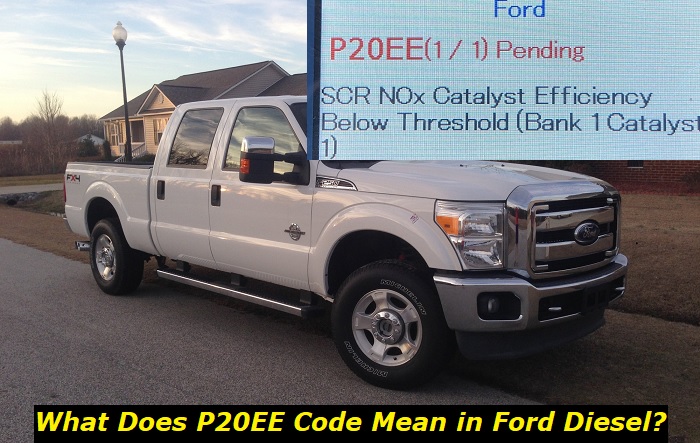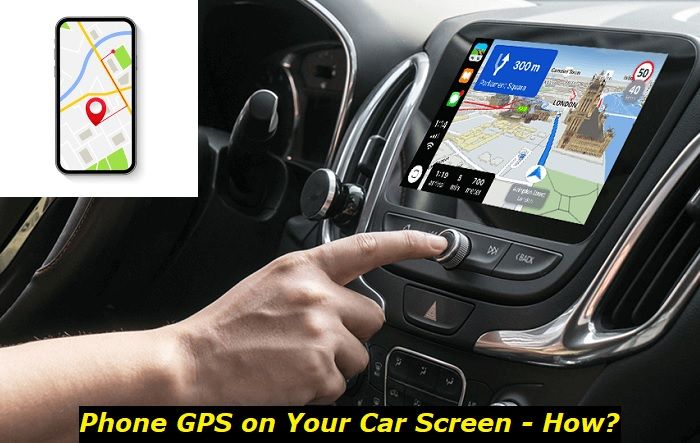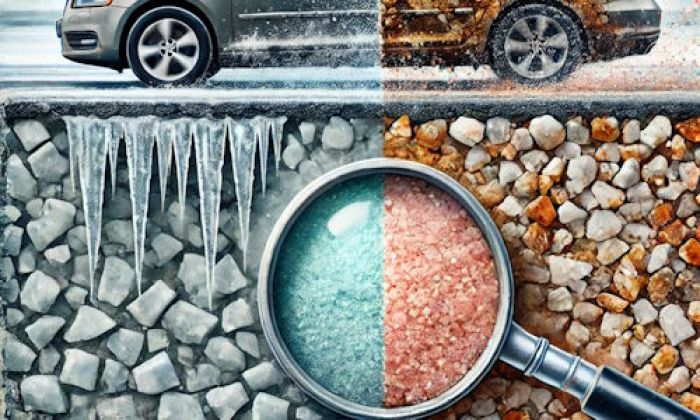Today's day and age of the automotive world brings many benefits to the table as modern-day cars are much more advanced, better equipped, more sophisticated, more efficient, and more infused with technology. On the one hand, this does make our lives easier, but on the other, it makes it more difficult when a car breaks down.
P20EE code highlights
- Level of urgency:Medium
- Possible culprits:DEF system, catalytic converter, emission sensors
- Price for repair:$50 - $1,000
- If neglected:Limp mode, failing of emission test
- DIY repairs:Possible but may be complicated
- Can you drive?Yes

P20EE in Ford 6.7 Diesel: How to Clean and What Does It Mean?
The P20EE code refers to a problem known as "SCR NOx Catalyst Efficiency Below Threshold Bank 1" and it usually appears when the SCR (selective catalytic reduction) system isn't able to work properly due to a clogged DPF system.
The SCR system is intended to reduce nitrogen oxide (NOx) emissions which means that it cooperates with the DPF system which collects diesel soot or diesel particulate filter and later burns it off when the system reaches optimum temperature.
When the DPF system clogs itself, it prevents the SCR system from doing its job and usually prompts up the dreaded P20EE DTC.
Today we'll talk about:
- How to Fix P20EE Code?
- How to Prevent P20EE Code?
- How to Clean the DPF System?
- Codes Related to the P20EE in Ford
How to Fix P20EE Code in Ford 6.7?
1) Scan the Code
To make sure your Ford 6.7 is definitely experiencing problems with the P20EE code, you'll have to scan it to confirm the presence of the P20EE code.
This will also allow you to extract detailed information about the code and provide you with more insight into any other codes that might co-exist with the P20EE code. Whatever you do, always be sure to double-check the system to see if the code is really there or not.
2) Visual Inspection
Even though it may seem too basic, a thorough visual inspection can often reveal the problem straight up which means that you sometimes won't be needing to take your car in for an inspection.
If you see any disconnected hoses, exhaust system leaks, or lots of soot and diesel deposits roaming around the place, this could lead you straight to the heart of the problem. Look for any obvious signs of damage, but be sure to do that when the car is cold in order not to burn yourself.
3) Update the Software
At the begging of this article, we already said that modern-day cars are much more complex, and one notable reason why is the presence of millions of lines of software code. With so much software, things tend to change which prompts Ford to issue a software update.
Software updates such as these can sometimes be targeted to solve existing problems or they can be targeted to improve certain systems in order to reduce the probability of issues taking place. As such, be sure to call your Ford dealership and ask if new software is available for your Ford.
4) Force DPF Regeneration
If none of the previous tips help, go ahead and take your manual and look for information regarding forced DPF regeneration. This process typically includes driving your car at a higher RPM for a while in order for the DPF to become really hot and start burning off the diesel soot that has accumulated within the exhaust system.
You should, in general, be driving around for at least 30 minutes at optimum temperature while keeping your RPMs above 3,000RPM as consistent as you can.
5) Inspect the EGR System
The EGR system is also closely related to DPF and the SCR systems which means that it would be a good idea to check the EGR system to see if it's functioning as intended. The EGR system is a known sore point for many diesel engines as it is tasked with recirculating portions of exhaust gases into the engine.
If any of these gasses somehow manage to escape, it could very well cause issues with the SCR system and thus prompt up the P20EE DTC.
6) Clean or Replace DPF
If a clogged, damaged, or blocked DPF is the cause of your problem, you will either have to clean it or replace it. If it isn't damaged, start cleaning the system first.
When it comes to cleaning the DPF, it is generally recommended to take the car in and look for special assistance while attempting to clean the DPF. Since the DPF is so vital to the overall emissions profile of a vehicle, most automakers insist that DPF cleaning needs to be left to their own technicians. This also means that doing this yourself is likely to void your warranty.
If your DPF system is damaged and needs replacing, well, then you sure need to take your car to a dealer or a specialist for an official inspection. DPF filters tend to be relatively expensive and installing and removing them can often require you to remove and add exhaust system components, all of which require decent mechanical experience.
How to Prevent P20EE Code?
Since this code is heavily associated with one not driving the 6.7 long enough for the DPF to automatically regenerate, the best thing to prevent the P20EE code is to use your 6.7 for longer, multi-hour drives or hauling/towing.
The reality is that DPF issues are mostly happening to cars that spend most of their driving time on short trips which are not something diesel cars are even fond of. If you often drive your car at highway speeds for longer journeys, you are going to lower your chances of experiencing the P20EE substantially.
Other tips also include using high-quality diesel fuel and making sure to maintain your car as per recommendations. This means replacing the fuel and oil filters, replacing the oil, and doing routine checks.
Idling is also not something diesel cars are fond of as idling leads to incomplete combustion which in turn increases levels of soot within the system. Regularly inspect the EGE system and perform all of your EGR, SCR, and DPF repairs as soon as issues appear.
How to Manually Clean the DPF System?
If you own a modern 6.7 Ford, the system typically prompts up a message that starts the automatic DPF regen cycle. However, if you are not able to perform the automatic regen when needed, you don't have to wait a few days for the message to reappear and you don't have to continue your journey to clean it.
First, you must disable the auto-regen in the center dashboard screen. Once the filter deems that it is full, it is going to prompt up a message saying "DPF Filter Needs Cleaning" and will give you the option to press OK and start the DPF regen process.
The system will then show you another message that requires you to confirm that the exhaust area is clean as DPF regen involves extremely high exhaust temperatures which can easily start a fire or burn your wall.
Codes Related to P20EE in Ford 6.7
It is widely known that codes such as these tend to come in conjunction with other codes which can be very useful for tracking down all of the issues with your car.
These are the most common codes related to the P20EE in Ford 6.7
- P0404 - Exhaust Gas Recirculation Circuit Range/Performance: This code indicates a more general issue with the EGR system's circuit or performance.
- P0401 - Exhaust Gas Recirculation Flow Insufficient Detected: This code refers to a problem with the dreaded EGR system, which tends to be contributing to the clogged DPF and related issues.
- P2002 - Diesel Particulate Filter Efficiency Below Threshold Bank 1: This code indicates that the DPF's efficiency is below the expected threshold due to clogging, blockage, or other similar issues.
- P2459 - Diesel Particulate Filter Regeneration Frequency: This code can indicate that the DPF regeneration frequency is not within the expected range which means that you will have to perform regens more often.
- P2263 - Turbo/Supercharger Boost System Performance: This code could be related to the P20EE if there's a problem with the turbocharger system which can affect the EGR, the SCR, and the DPF system.
Conclusion
The P20EE code is sadly a relatively common code with the Ford 6.7 Powerstroke because DPF, SCR, and EGR problems are common with many modern diesel engines equipped with sophisticated emissions control systems.
In the case of the 6.7, this code usually indicates that the DPF filter is too clogged for the SCR system to be able to control the car's emissions profile. To solve it, it's best to try to regenerate the DPF, either automatically or manually.
If it does not help, it would be good to try and take the DPF off and clean it manually. For that, be sure to take your car for professional assistance.
About the authors
The CarAraC research team is composed of seasoned auto mechanics and automotive industry professionals, including individuals with advanced degrees and certifications in their field. Our team members boast prestigious credentials, reflecting their extensive knowledge and skills. These qualifications include: IMI: Institute of the Motor Industry, ASE-Certified Master Automobile Technicians; Coventry University, Graduate of MA in Automotive Journalism; Politecnico di Torino, Italy, MS Automotive Engineering; Ss. Cyril and Methodius University in Skopje, Mechanical University in Skopje; TOC Automotive College; DHA Suffa University, Department of Mechanical Engineering






Add comment